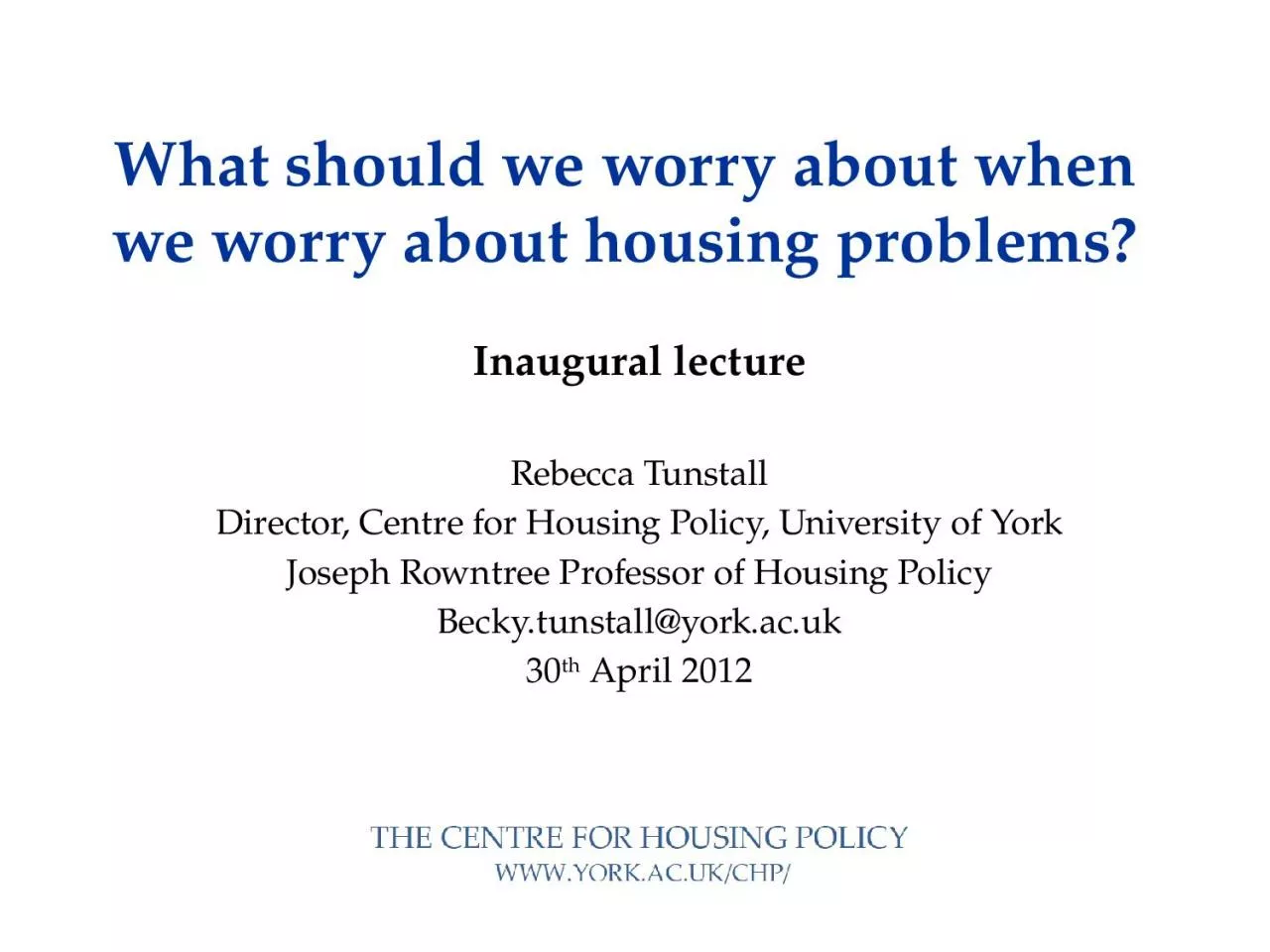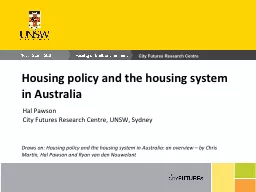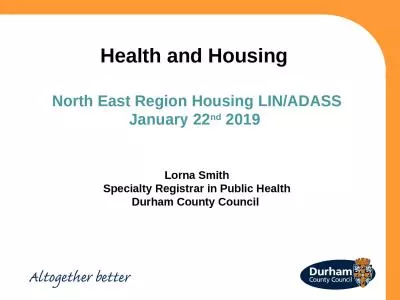PPT-What should we worry about when we worry about housing problems?
Author : emily | Published Date : 2023-11-21
Inaugural lecture Rebecca Tunstall Director Centre for Housing Policy University of York Joseph Rowntree Professor of Housing Policy Beckytunstallyorkacuk 30 th
Presentation Embed Code
Download Presentation
Download Presentation The PPT/PDF document "What should we worry about when we worry..." is the property of its rightful owner. Permission is granted to download and print the materials on this website for personal, non-commercial use only, and to display it on your personal computer provided you do not modify the materials and that you retain all copyright notices contained in the materials. By downloading content from our website, you accept the terms of this agreement.
What should we worry about when we worry about housing problems?: Transcript
Download Rules Of Document
"What should we worry about when we worry about housing problems?"The content belongs to its owner. You may download and print it for personal use, without modification, and keep all copyright notices. By downloading, you agree to these terms.
Related Documents














